Artist Interviews 2021
Sherry Cagan 
By Julia Siedenburg

Sherry Cagan is a successful horse cutting champion and sculptor who creates pieces, sometimes as small as a candle and other times larger-than-life monuments that took her a year to make.
Her clients vary from her Alma Mata School Stanford to the Cowgirl Museum in Fort Worth, Texas all the way up to Steven Spielberg. Her deep passion for horses is the reason her work is so alive, so detailed and so full of love.
I feel very fortunate to have spend time with her and seen her impressive beautiful pieces in person. Now I want you to get to know her, too. So here we go:
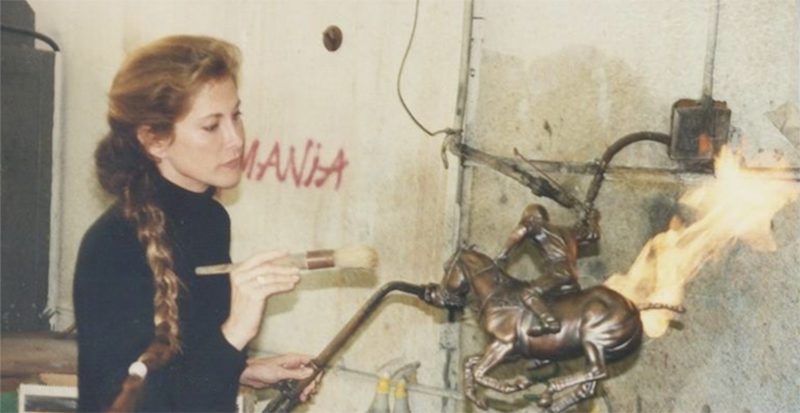
What does art mean to you?
Art imitates life. We often see it. I created a piece of a polo player doing a neck shot and low and behold, the player that I sculpted ended up on the front cover of the international polo magazine. The day I delivered the piece to the client who commissioned it now, that was probably the most amazing example of how art imitates life. And we have a picture of the magazine cover and the bronze next to each other with a very big smile on his face. That's not common, but that's probably the closest, certainly that, that example of how art imitates life. I've had many other Sam examples also. But that's certainly the most amazing situation that portrays art-imitating life.
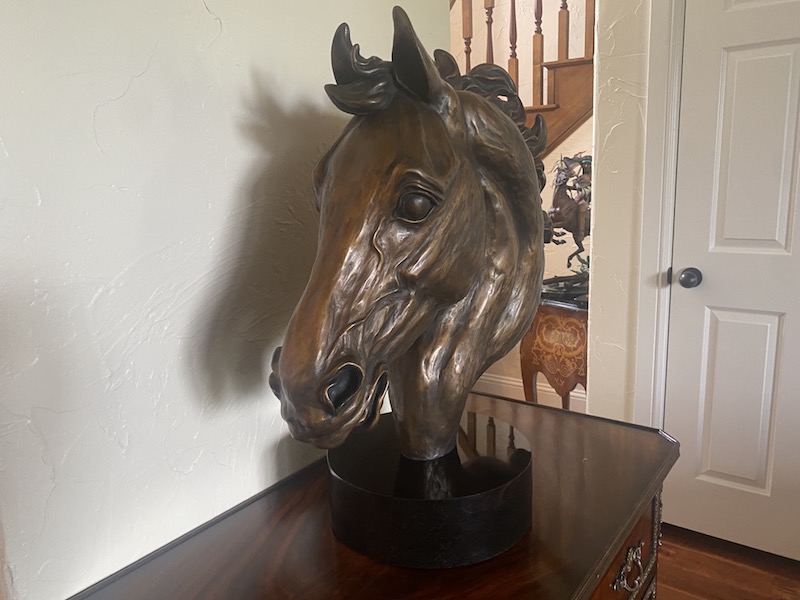
What inspired you to do bronze sculptures?
What drew me to bronze sculptures and to create bronze sculptures was the historical factor I was drawn towards. Remington's work and when I was a young girl going through museums frankly, any kind of sculptor. It seemed as though I drew to it like a magnet, but it was the historical storytelling that really drew me to sculpt bronze sculptures specifically. And they, it's not just the emotion that they invoke, but it's the strength and the character of the horse, the people of that time, the events that were going on around that time that really moves me.
I think the thing that I value most now is to work towards ways to mentor young people. I have been fortunate to derive such satisfaction in my art, my work. My children have bloomed and thrive in their art that isn't their core focus in life, but because of the development of their creativity, it has helped them in other aspects of their life, whether it be designing clothing, writing science translational science, whether it's art, the development of creation.
Creating is a real attribute and one's way of expressing any form of profession. And that can be in public speaking. It can be just speaking to your friends and the way you use your language and use one's voice. Singing. I I'm a singer. I, I love singing. I feel like I could fly when sing. It's really connecting the body, the brain, the soul, the spirit in art and, and whatever form of art that one feels so to express

How are you implanting yourself in your work?
My idea for the pieces come from within first, a feeling that I get and then the feeling becomes an image. And when I sit down in front of the clay, of course you have to do some engineering. Certainly for a life-size piece. There's a lot of thought that goes in to engineering, but once the armature is set up and the clay starts going on, there's a field that happens with the rhythm and the flow, especially the horses subject that I know very well innately with my eyes closed.
So the life sized pieces, I can run my hand down the neck and know how that muscle comes in. And so you can almost just feel the flow of the horse and the motion that you feel all on the horse. And so I would say that it comes from an emotion and a flow and a feel, and most of those feelings are from, for me, life experience with my horses. I do many horse sports. So my pieces exemplify the emotion of that sport and the degree of difficulty of that sport. And many of them are from an emotional or sentimental side
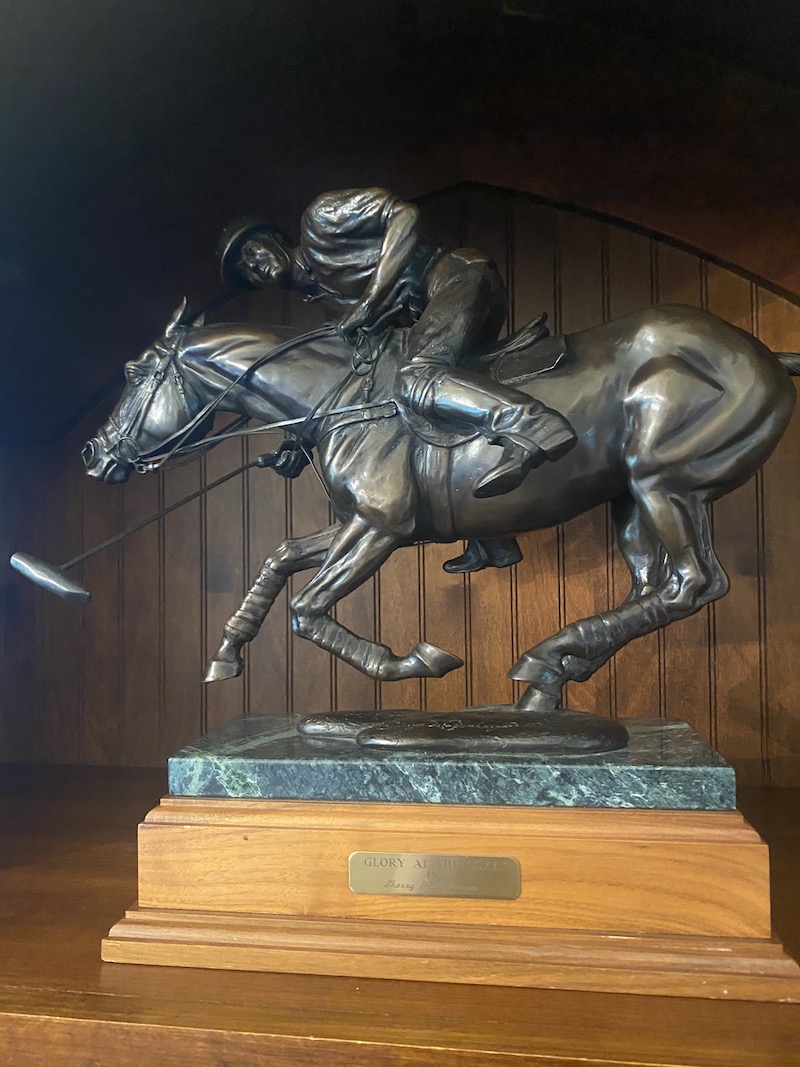
Was art always a part of your life?
I just had an image that when I was really small, maybe four years old, I remember my mother teaching me how to draw up by me. And that's probably my earliest memory of drawing and feeling an accomplishment. It looked like something and I created after that, a little Christmas book and drew the images of Jesus and the manger and so on. And, I think those early years are, are very important.
My mother recognized that I love to draw. I was always drawing. I always had a pencil in my hand and she took me to an artist for some lessons. And I remember she had an outside studio on and under the shade and she had a rabbit. And I might, I might've been eight years old. And this teacher took me through all the various aspects of art and different styles of art and I had exposure to, so then I could find out what areas of art that I particularly liked, and that was invaluable.
I would hope that young children today have the opportunity, whether it's through school, whether it's through friends or family to be exposed to materials that they can explore. There, there aren’t…… when my kids went to school early on, I, I did go and teach art classes at their school, both drawing and sculpting. And I believe that there were children there that had real true talent. I think everybody has some, some degree of talent, but there were a few that had real talent and the exposure to being able to create.
I brought clay and each of them had a chance to create their own piece. They went on, there were a few of them that went on and really had the chance to explore their work in art and they were grateful to that. And I, I hope that more kids have exposure so that they can really enjoy their art, because you can do art when you're young you're old, you could do all sorts of art and, and it doesn't have to be anything that is at a museum. You can enjoy your work in your own environment and just the pure joy of doing it, is immensely rewarding besides that it does,

How did you start?
I was very fortunate. I met; I've had two wonderful mentors, artists, artist-mentors in my lifetime. The first one was in ninth grade. She and I became friends and were friends throughout life, throughout her life. And she was, I think it started with being an amazing person. And I loved her work. I didn't know anything about sculpting in ninth grade, obviously, but she went to Africa every summer and sculpted wild animals, which, I love animals. And she was a very strong woman and that's what really attracted me. That's what really attracted me to her.
And I think she saw in me a desire to sculpt and an admiration for who she was as, as a human being. And she became a great advocate. I went on to win all the school awards, art awards and so on, but it really was because of the love of her as a human being. And I became, I developed a love for sculpting and on an understanding of how to sculpt in my early years, I went back to school and taught for her and of course, you know, she came to my exhibitions and so on later in life, and it was very rewarding to have such a significant mentor. I showed horses on a national level for many, many for a few decades. And so I didn't have much time to sculpt. It wasn't until later in life.
In 1996, I realized that I really had the time to actually sit down and have the time to sculpt.
So I went to an art show and I met a little Hungarian man that I just really loved his work, very refined. And I asked him if I could come and watch him work in a studio. And then he said (Sherry lowering her voice), “That would be all right”. And so we became fast friends and he also has been my mentor and he taught me how to do armatures and armatures for life sized pieces. And really it was he who developed, helped develop a more sophisticated skillset to create silently sizable pieces -monumental size pieces.
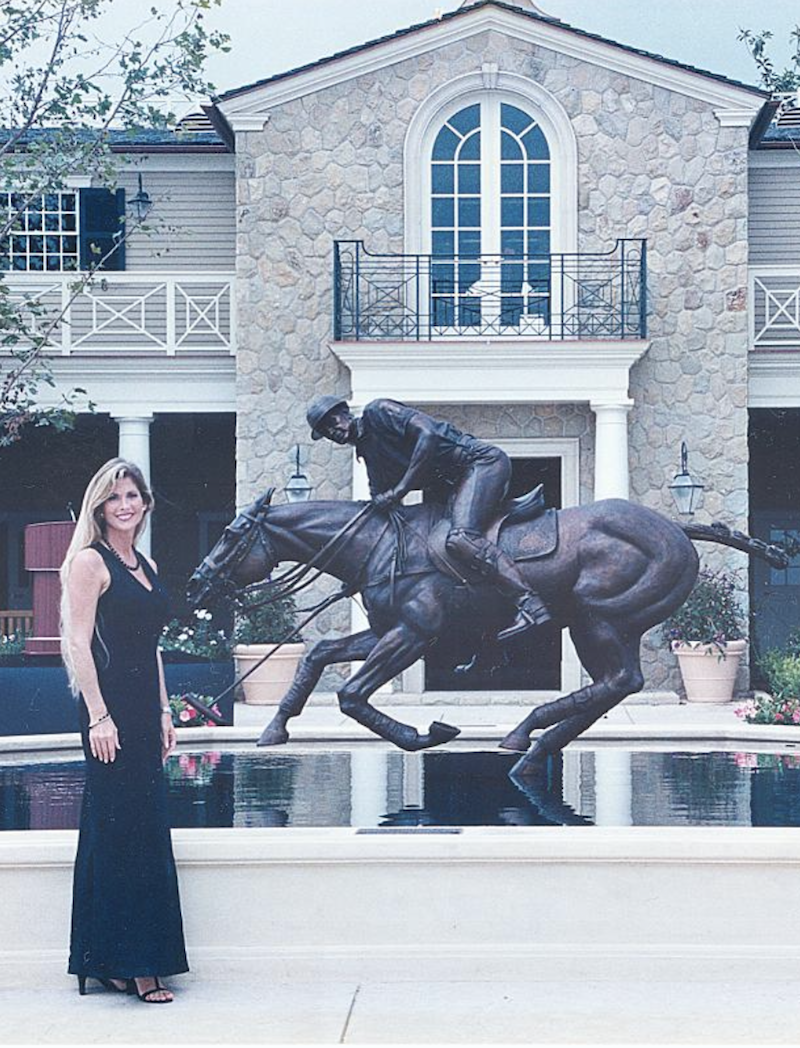
It seems that your pieces vary from smaller to bigger than life size. Is that true?
Well, most of my pieces, I have about 25 pieces that are coffee table size, Marquette size. And then I have several lives sized pieces and then a few monumental size pieces, which are slightly larger than life. And the size that, the thing that really discerned determined size is - where is that piece going to be exhibited. For example, I have a piece at Stanford University. It's a monumental piece that exemplifies the migraine study, which is the first of motion picture. It was where a photographer, it was where the photographer Muybridge set up cameras and took consecutive photos of a horse running to prove whether they had all four feet off the ground or not. It started out as a bet with Leland, Stanford, and lo and behold, that progression of photographs then was actually the beginning of motion picture.
And it became apparent we might were very highly involved with Stanford University. And, and it was interesting how the entertainment business knew about that study being the first of motion picture. And the first home picture was shown at Leland Sanford’s home, but the students really didn't know much about the history. So it was very important for me to provide a sculpture that illuminated the history. And so, now more students have noticed and understand the history there, there at Stanford University.
And the visitors, it's called “Horse in Motion” and it's a monumental piece and it is on the Stanford art map. So people can now learn about a piece of history. The first of the motion picture through the sculpture of a horse running with one foot on the ground. And what's unique about the horse in motion sculpture at Stanford University on the Stanford art map is, that it actually is running full on with one foot, it's running full speed. And the only thing that's holding it up is one foot. So, there was a lot of engineering that went into supporting of the armature, the steel that's underneath the sculpture itself, inside the sculpture to support that monumental piece mounted on one foot.

How heavy is the “Horse in Motion” piece?
That piece Horse in Motion is around 1800 pounds. It is, it is slightly larger than life. So it's, it's a big piece and it's about 12 feet long, because it's counted from the nose that is stretching out to the end of the tail that's flying out in the back. So it's quite a big piece and it's about eight feet tall. But of course, it's up on a large pedestal. So it's, it's approximately eleven feet tall in height altogether. So it's a monumental piece.
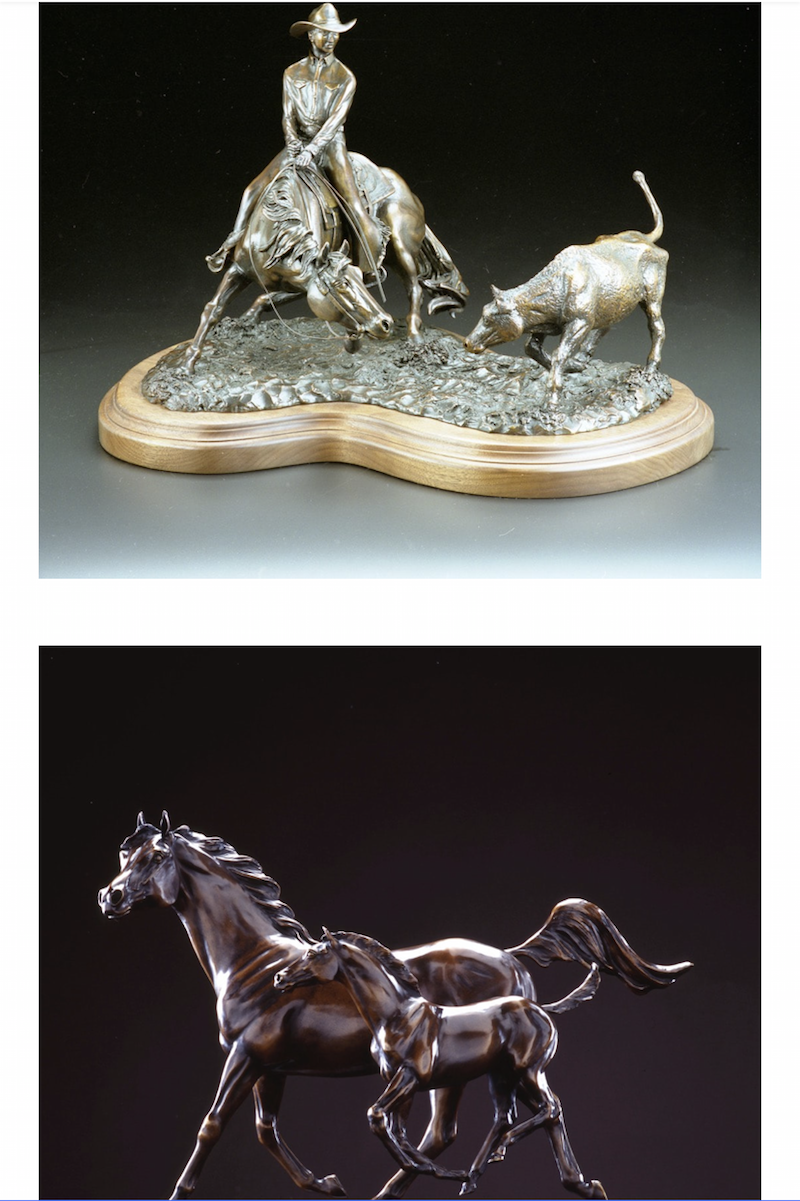
Can you tell the people that do not know the story, what the final verdict of the camera horse bet was at the end?
The final verdict of the bet is that horses do have all four feet off the ground when they're running. Of course, that was impossible to sculpt that way, but I was able to get one foot on the ground and all three off the ground and to display of this historical piece.
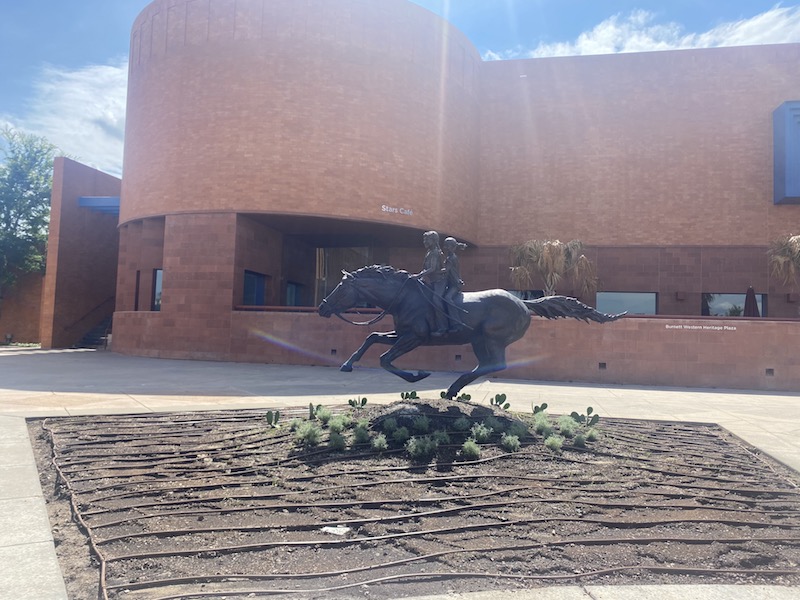
Besides your art and your family, the horses around you, are there any other people you sculpt? Western art, is that inspiring you a lot?
Yes. Remington. He used to come to the cuttings (horse competitions) and display his work. They were magnificent, they were life-size and it was very inspiring. I didn't work with him, but he did inspire me. And he's a famous Western artist.
And also my mentor Joseph Kraus, who was kind enough to take me under his wing,
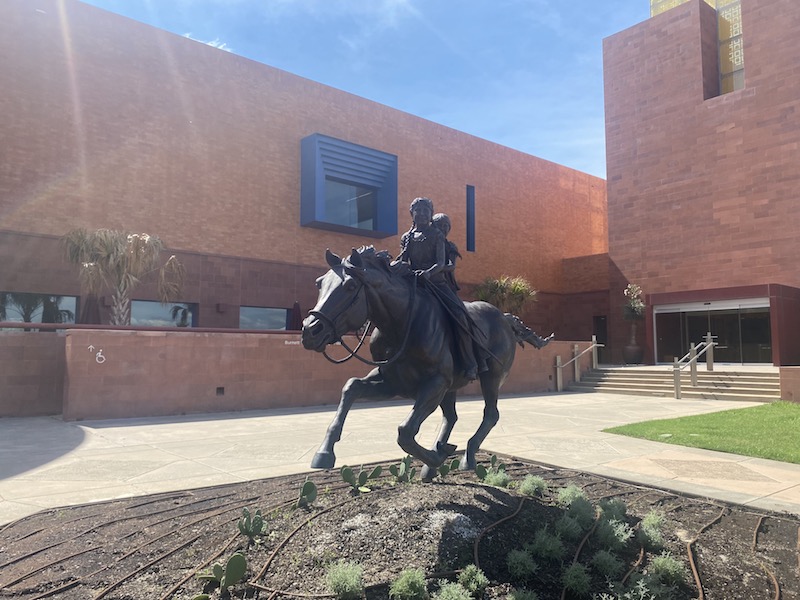
What do you feel when you create?
The last time I was at the Foundry, which has happened many times in my own studio, I get working and it's almost like this creative juice or getting in the zone takes over. And no matter how tired I am physically - spiritually, I'm very invigorated and alive. And I just get moving, you know, just the flow of it just keeps going. And, and often I found myself working through the night, pulling all-nighters, and then I'd get up in the morning after a little rest. And I want to go look at the piece right. It's almost like “Where was I when that happened?”- And there's this kind of amazement, actually that happens, where it's almost like you're not, you're, you can't believe you did it. You know, it just kind of creates itself if you will. So it really comes from emotion, from inside and this very soulful thing that, that occurs during getting into the zone.
There are other times where you can't get into the zone, you know, there's been times where I haven't been able to get into the zone. I'll sit in front of a piece and then I'll just keep sitting there and dabbling here and there, but it's not coming. And so I've learned to wait, I've learned to give myself an opportunity to sit in front of a piece or start a piece. But I wait for that song to come. And when it comes, it, I am able to create things that I didn't think I could.

What event or moment in your career are you particularly proud of?
I've been honored in several different ways. I've been honored through various organizations. My work's been displayed various places, which I'm very humbled by.
My most meaningful time sculpting is when my daughters came with me to the Foundry and helped me on a life-size piece that is displayed at the National Cowgirl Museum in Fort Worth, Texas. It's a piece that, not only did my girls help me with, but of them running bareback on a horse…free.
They’re just cowgirls paving the path for others. It's, it's a piece, it’s a lifestyle. I so wanted for my daughters to be able to jump on a horse bare back and just go flat about, and have a love for the animals, have a love for our land and, and a respect for it.
And I took them when they were young to the Foundry and we spent quite a long time there and they got on ladders and they, they would, they're little, little fingers. They were just very, very young. Then I'd say, they were eight, nine years old and they signed the piece. And so it gave them some pride. Maybe they didn't realize it at that age, but I do believe they feel the pride now because they began their art journey back then. So they helped me on my piece, the big piece, they made their own little pieces and I learned the lost wax process. So they went through the Foundry, the manager at the Foundry who I've been working with for many years, he was just, just a prince. He took the girls through and showed them the whole process.
They learned the whole process step by step. I have a real deep understanding of the lost wax process, how to create an armature, how to bring forth your own experience, life experience, your own emotions, your own rhythm, your own flow into their pieces. Which, I believe is really important in creating art of any kind, whether it be painting, sculpting exhibition type displays - something that evokes emotion.
And I do believe that if you feel that emotion, that you want to create that piece very strongly and as you're creating it, that in return, it will evoke emotion from others. And that's a very satisfying and rewarding reward for any artist.

What is next? What are your plans for the future?
I think the thing that I value most now is to work towards ways to mentor young people. I have been fortunate to derive such satisfaction in my art, my work. My children have bloomed and thrive in their art that isn't their core focus in life, but because of the development of their creativity, it has helped them in other aspects of their life. Whether it is designing clothing, writing science, translational science, whether it's art, the development of creation.
Creating is a real attribute and one's way of expressing any form of profession. And that can be in public speaking. It can be just speaking to your friends and the way you use your language and use one's voice. Singing. I'm a singer. I, I love singing. I feel like I could fly when I sing. It's really connecting the body, the brain, the soul, the spirit in art and, and whatever form of art that one feels so to express.
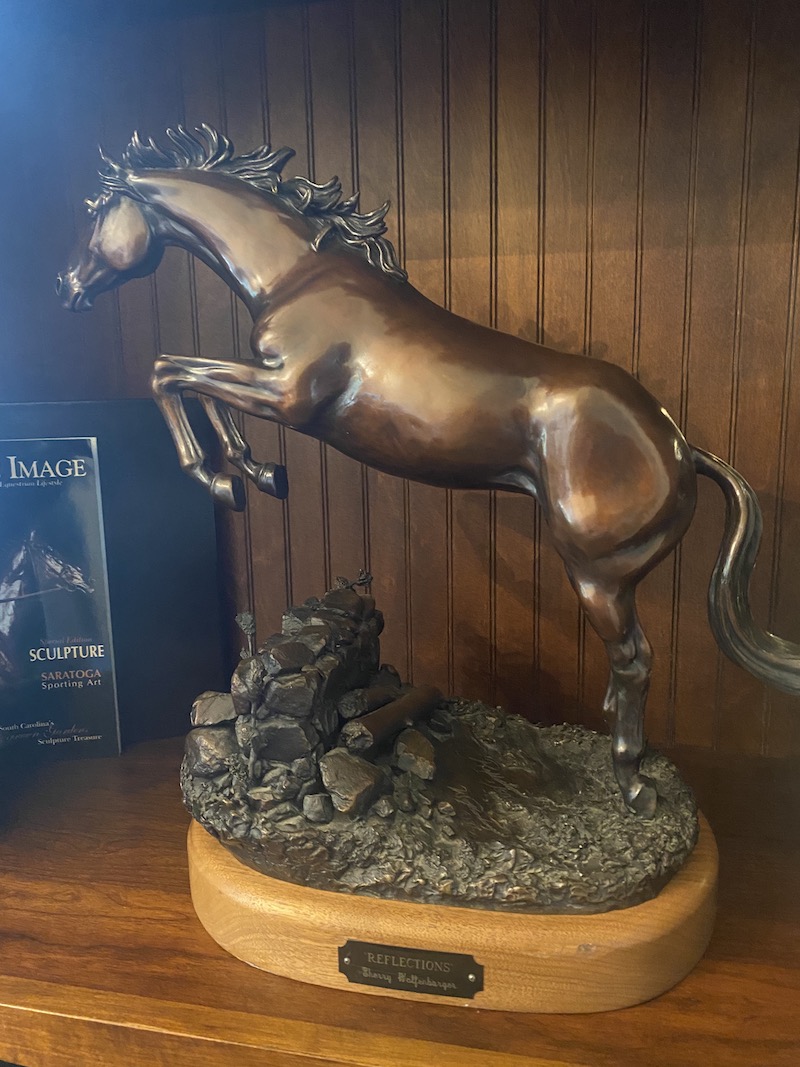
|
|

